
How to Use MKE-M03 Buzzer Module: Examples, Pinouts, and Specs
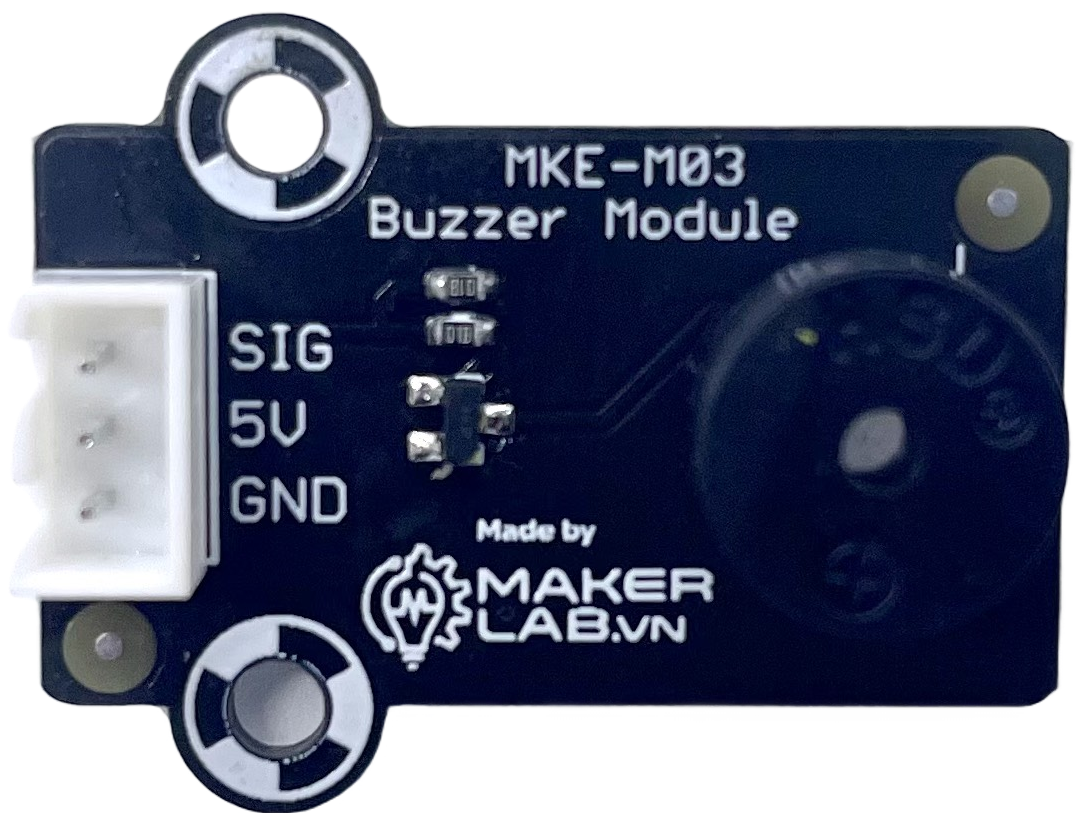
 Design with MKE-M03 Buzzer Module in Cirkit Designer
Design with MKE-M03 Buzzer Module in Cirkit DesignerIntroduction
The MKE-M03 Buzzer Module is a compact and versatile electronic sound-producing device. It is designed to emit an audible tone when energized by an electrical signal. This buzzer module is widely used in various applications such as alarm systems, timers, confirmation of user input in electronic devices, and as an audible indicator for notifications.
Explore Projects Built with MKE-M03 Buzzer Module
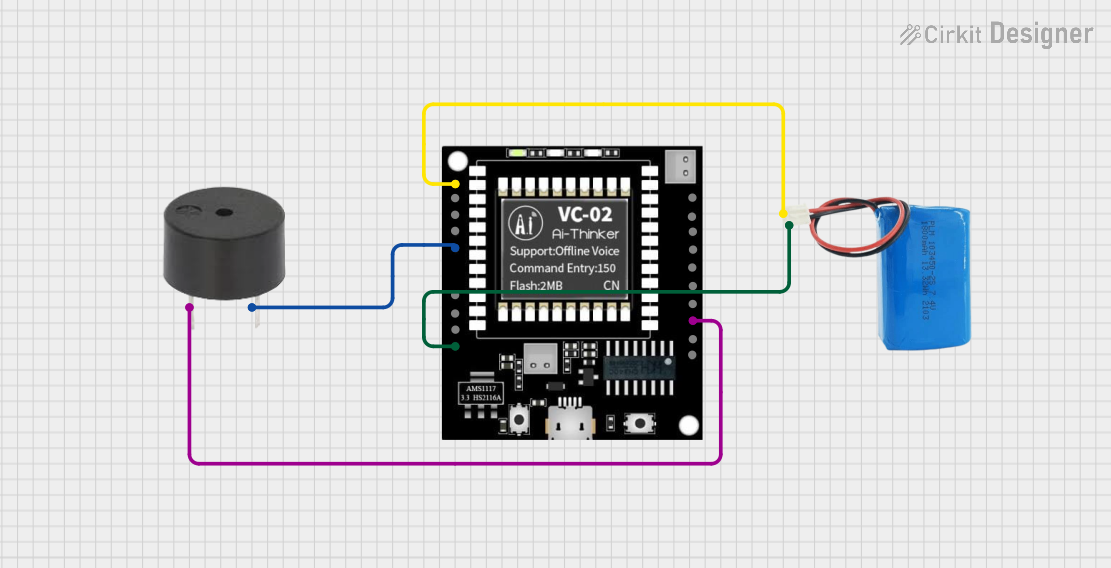
 Open Project in Cirkit Designer
Open Project in Cirkit Designer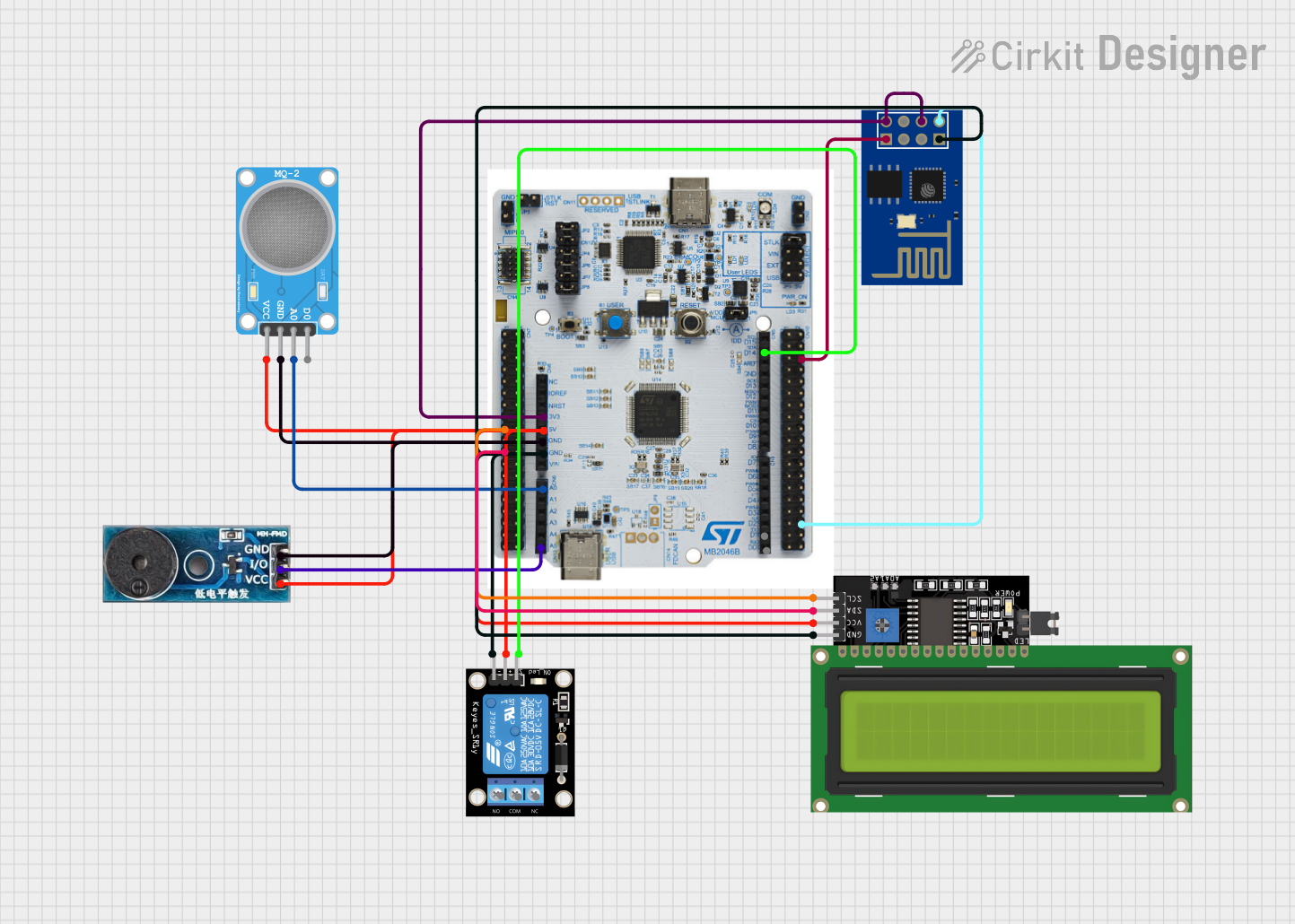
 Open Project in Cirkit Designer
Open Project in Cirkit Designer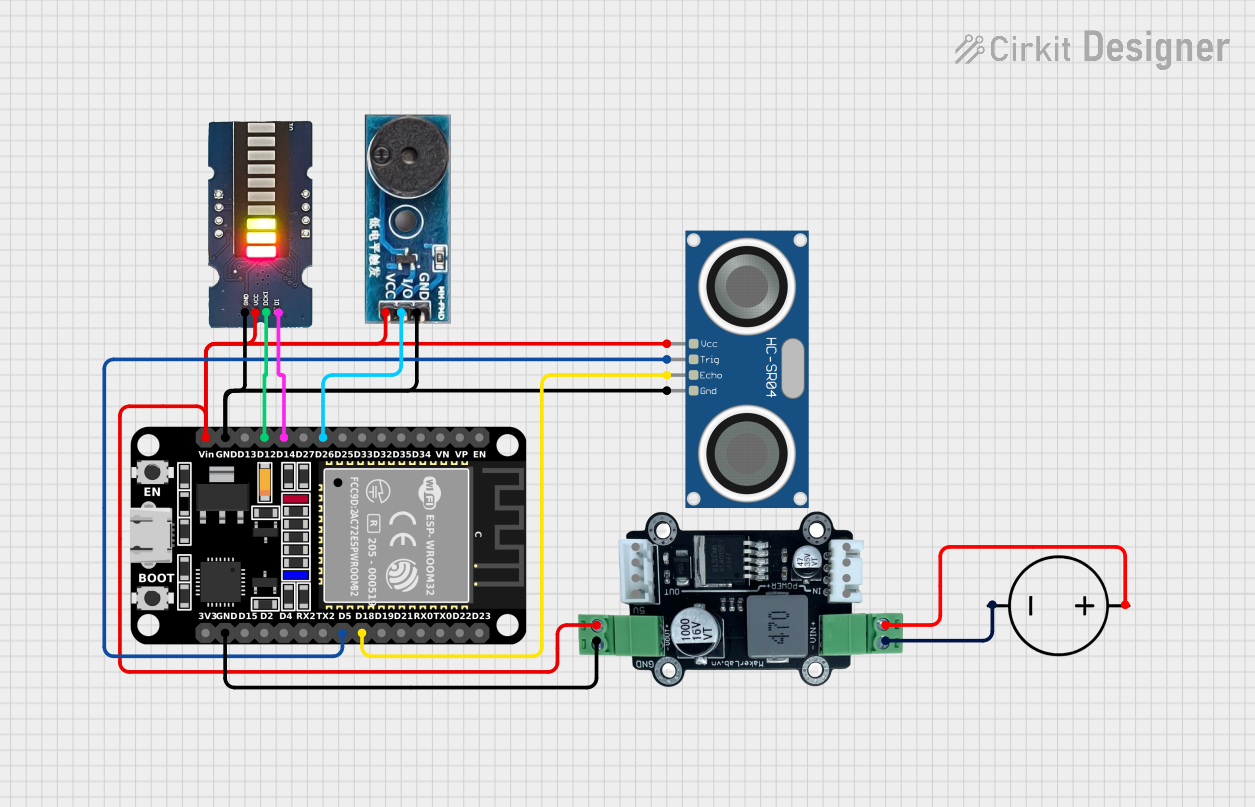
 Open Project in Cirkit Designer
Open Project in Cirkit Designer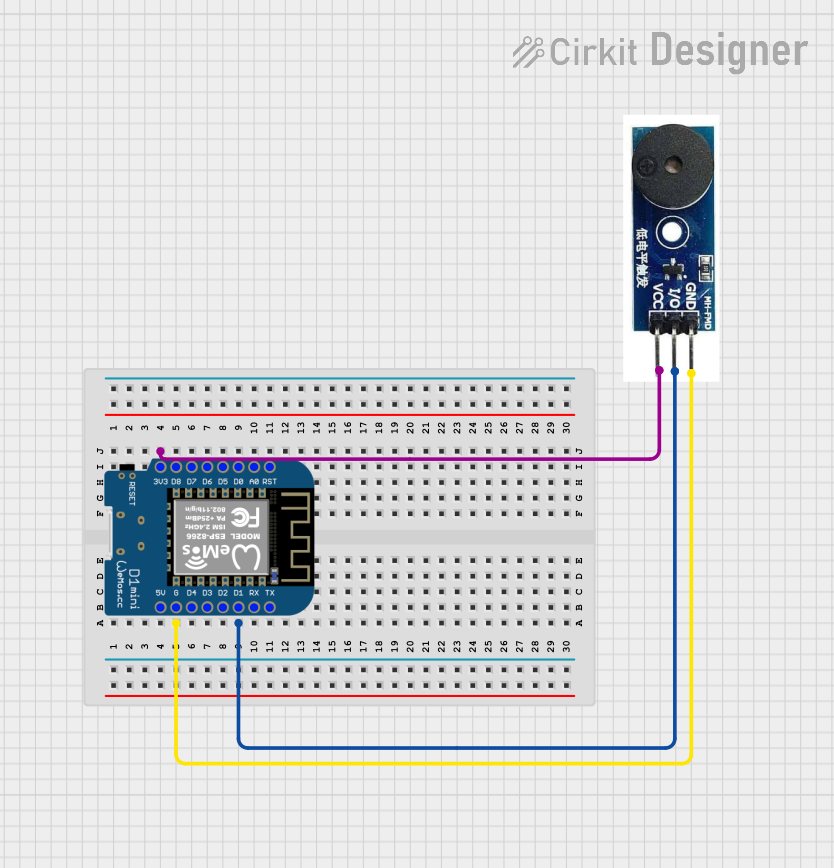
 Open Project in Cirkit Designer
Open Project in Cirkit DesignerExplore Projects Built with MKE-M03 Buzzer Module

 Open Project in Cirkit Designer
Open Project in Cirkit Designer
 Open Project in Cirkit Designer
Open Project in Cirkit Designer
 Open Project in Cirkit Designer
Open Project in Cirkit Designer
 Open Project in Cirkit Designer
Open Project in Cirkit DesignerCommon Applications
- Alarm systems
- Electronic toys
- Timers and stopwatches
- User input feedback for devices
- Notification systems in appliances
Technical Specifications
The following table outlines the key technical specifications of the MKE-M03 Buzzer Module:
| Specification | Value | Description |
|---|---|---|
| Operating Voltage | 3.3V - 5V | The voltage range within which the buzzer operates safely. |
| Rated Current | 30mA | The current consumption at the rated voltage. |
| Sound Output | ≥85dB | Minimum sound output level at 10cm distance. |
| Resonant Frequency | 2300Hz ± 300Hz | The frequency at which the buzzer naturally oscillates. |
| Tone | Continuous | The type of sound emitted when powered. |
| Drive Type | Passive (requires an external signal) | The buzzer needs an external signal to produce sound. |
Pin Configuration
| Pin | Description |
|---|---|
| VCC | Power supply (3.3V - 5V) |
| GND | Ground connection |
| SIG | Signal input, controls the buzzer |
Usage Instructions
Connecting to a Circuit
- Connect the VCC pin of the MKE-M03 Buzzer Module to the positive supply voltage (3.3V - 5V).
- Connect the GND pin to the ground of the power supply.
- The SIG pin is used to control the buzzer. Connect this to a digital output pin on a microcontroller, such as an Arduino UNO.
Best Practices
- Do not exceed the recommended voltage as it may damage the buzzer.
- Use a current-limiting resistor if operating at a voltage significantly lower than the rated voltage to prevent insufficient sound output.
- Avoid continuous operation at high sound levels to prolong the lifespan of the buzzer.
Example Code for Arduino UNO
// Define the buzzer control pin
const int buzzerPin = 8;
void setup() {
// Set the buzzer pin as an output
pinMode(buzzerPin, OUTPUT);
}
void loop() {
// Turn on the buzzer
digitalWrite(buzzerPin, HIGH);
delay(1000); // Buzzer on for 1 second
// Turn off the buzzer
digitalWrite(buzzerPin, LOW);
delay(1000); // Buzzer off for 1 second
}
This simple Arduino sketch toggles the buzzer on and off every second. The digitalWrite function sends a HIGH or LOW signal to the buzzer, which turns it on or off, respectively.
Troubleshooting and FAQs
Common Issues
- Buzzer not sounding: Ensure that the connections are correct and secure. Check the power supply voltage and signal input.
- Low sound output: Verify that the operating voltage is within the specified range and that the current is not limited excessively by a resistor.
- Intermittent sound: Check for loose connections or intermittent signals from the control source.
FAQs
Q: Can I use the MKE-M03 Buzzer Module with a 3.3V system?
A: Yes, the buzzer can operate within a 3.3V - 5V range, making it suitable for both 3.3V and 5V systems.
Q: Does the buzzer require a PWM signal to operate?
A: No, the MKE-M03 is a passive buzzer and can be operated with a simple digital HIGH/LOW signal. However, you can use PWM to create different tones.
Q: Is it possible to adjust the volume of the buzzer?
A: The volume is not directly adjustable. It is determined by the input voltage and the design of the buzzer. However, you can indirectly affect the perceived volume by changing the distance or enclosure around the buzzer.
For further assistance or inquiries, please contact the manufacturer or your local distributor.